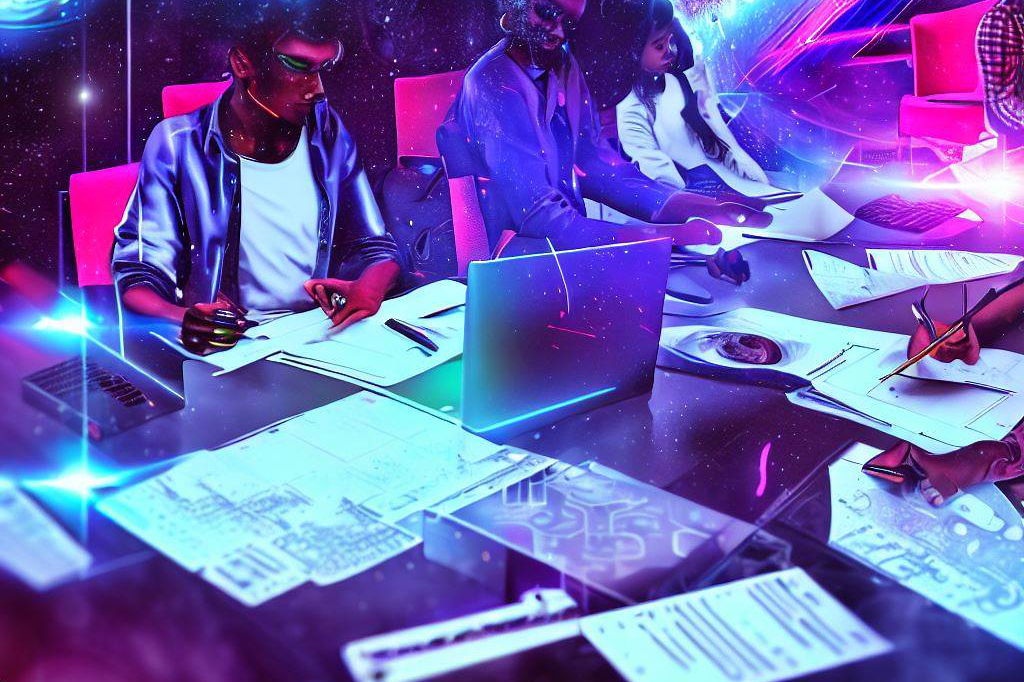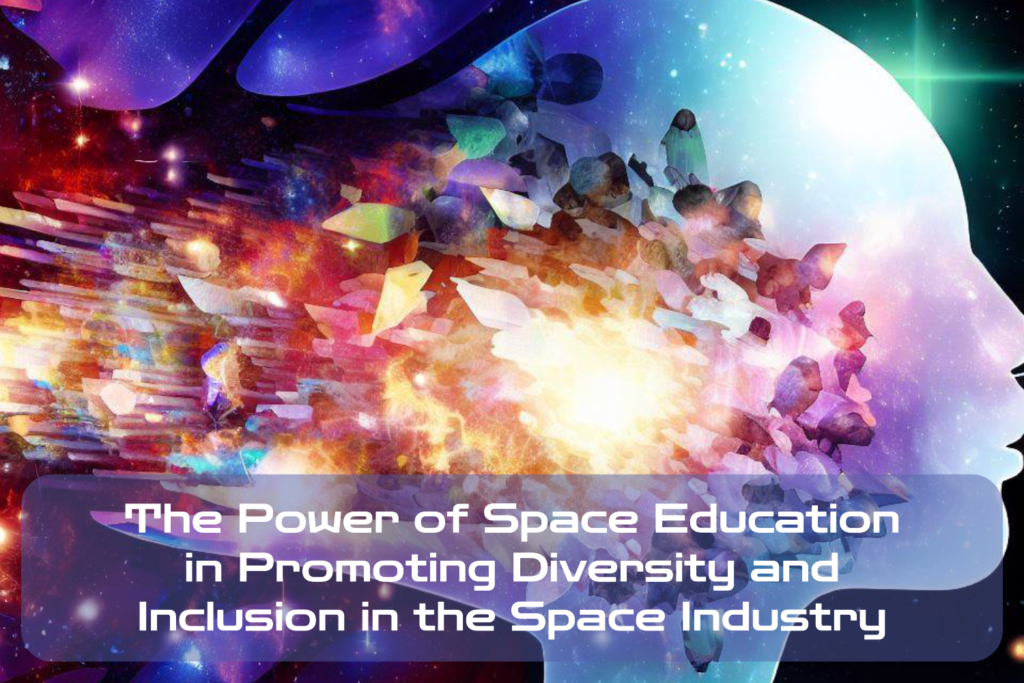The space industry has long been a bastion of technological innovation, discovery, and human achievement. It has captured the imagination of people around the world for generations, inspiring countless individuals to pursue careers in science, technology, engineering, and mathematics (STEM).
Yet for all its achievements and potential, the space industry has remained largely homogeneous. Despite efforts to broaden participation over the years, women and minorities remain underrepresented in many aspects of space exploration.
For example, recent data shows that as of 2021, women make up only about 28% of NASA’s workforce. Similarly, minorities remain underrepresented across various disciplines within NASA’s workforce.
This lack of diversity is concerning for several reasons. First and foremost is a lack of equity: talented individuals from diverse backgrounds may be excluded from participating in an industry that offers many exciting opportunities to contribute to society.
Secondarily, it is a problem with respect to creativity: without diverse perspectives on problems ranging from spacecraft design to mission planning, it can lead to missed opportunities or suboptimal solutions.
There are issues related to fairness: given that tax dollars fund much of this work and that scientific progress ought to be made available equitably among all taxpayers who have funded it.
The Importance Of Addressing This Issue
It is critical for leaders in the space industry – both public and private – to address this issue head-on if they wish to fully realize the true potential of their work.
Diverse teams are known to be more effective than homogeneous teams when solving challenging problems; a greater range of perspectives may expose hidden assumptions or sources of bias that would otherwise be invisible.
Moreover, we must acknowledge that our society as a whole is increasingly diverse; any organization or sector lacking diversity will find itself at odds with broader social trends. The reality today is that young people aspiring to careers in STEM increasingly come from diverse backgrounds; the space industry must work to become a more attractive and welcoming sector for these talented individuals.
There is also an ethical case for greater inclusion and diversity: it is simply fair that all people have equal opportunities to contribute their talents, interests, and ideas to this important work. Space exploration has the potential to inspire future generations, but it can only do so if we take a proactive approach to creating a more inclusive space industry.
The Benefits of Space Education for Diversity and Inclusion

Breaking Down Barriers
Space education has the potential to break down barriers that have historically kept underrepresented groups from pursuing careers in the space industry.
By exposing children from a young age to space-related programs and opportunities, we can ensure that they have the knowledge and resources necessary to pursue their dreams regardless of their gender, race or socioeconomic status.
One example of a program that is working towards this goal is the Challenger Center for Space Science Education.
This nonprofit organization offers hands-on STEM education programs and experiences to students across the country. Their mission is to inspire students from all backgrounds to pursue careers in science, technology, engineering, and math fields by providing them with opportunities that they may not otherwise have had access to.
Creating Role Models
Representation matters, especially when it comes to inspiring young people to pursue careers in STEM fields.
By increasing diversity within space education programs, we can help create role models for children who may not have previously seen themselves reflected in these industries.
One program that has been successful in this area is Destination Imagination.
This global organization provides students with opportunities to develop skills such as creativity, critical thinking and teamwork by participating in challenges related to science and technology. They emphasize inclusion by partnering with organizations such as Girls Who Code and Code.org which specifically target underrepresented groups within tech fields.
Opening Doors
Space education has the power to open doors for underrepresented groups looking to enter STEM fields.
By providing students with access to hands-on experiences related specifically to space technology, we can help level the playing field for those who may not otherwise have had access. The National Society of Black Engineers (NSBE) offers many programs aimed at increasing diversity within STEM fields, including their Space Special Interest Group – Intrepid (SSIG).
This group focuses on providing members with opportunities to gain hands-on experience in space-related fields and connect with industry professionals. By opening these doors, we can help ensure that underrepresented groups have the skills and connections necessary to succeed in the space industry.
The Struggle for Diversity in the Space Industry

The History of Exclusionary Practices
The space industry has long struggled with diversity and inclusion.
Historically, exclusionary policies and practices have led to a lack of representation for women and people of color in the field.
For example, the first astronaut class in 1959 consisted entirely of white men.
Women were not selected as astronauts until 1978, and it wasn’t until 1983 that a woman flew in space.
Furthermore, while NASA’s workforce has become more diverse over time, there has still been a lack of progress when it comes to leadership positions within the organization.
In recent years, less than 10% of NASA’s senior executives have been women or people of color.
Systemic Barriers
There are many systemic barriers that continue to limit access for underrepresented groups within the space industry. These include factors such as financial barriers, a lack of representation in STEM education programs, and unconscious bias within hiring practices.
Even when underrepresented individuals do manage to secure positions within the space industry, they may face an unwelcoming or unsupportive work environment that makes it difficult to succeed. Moreover, efforts aimed at increasing diversity within the industry can be stymied by resistance from those who feel threatened by change or concerned about compromising technical excellence.
Moving Forward
In order to address these challenges and promote diversity within the space industry going forward, it is important to acknowledge these systemic barriers and work actively to overcome them. This involves reassessing hiring practices and making sure that they are inclusive for all individuals, regardless of their background.
It also entails creating supportive work environments where professionals from diverse backgrounds can thrive without fear of discrimination or harassment.
Moreover, initiatives aimed at increasing representation must be created at every level: from outreach programs designed to introduce students from underrepresented communities to STEM fields, to partnerships with universities that serve populations that have been historically excluded from the space industry.
Ultimately, promoting diversity and inclusion will benefit not only those individuals who are currently underrepresented in the field but also the industry as a whole. By bringing in new perspectives and diverse experiences, we can drive innovation and make space exploration more accessible and equitable for all.
Case Study: Successful Program Promoting Diversity and Inclusion

The Value of Diversity in Space Education
Before delving into the specifics of successful programs promoting diversity and inclusion within the space industry, it’s important to first understand why these efforts are so crucial. This is because diversity brings a wealth of benefits to space education that are hard to come by with a homogenous workforce. By encouraging individuals from different backgrounds, races, genders, and cultures to participate in space education, we can cultivate new perspectives and approaches that can help solve complex problems facing the industry today.
NASA’s Minority University Research and Education Project (MUREP)
NASA’s Minority University Research and Education Project (MUREP) is an excellent example of a program that has been highly successful in promoting diversity and inclusion within the space industry. The program aims to increase participation from underrepresented groups in NASA projects by providing funding for research opportunities, internships, scholarships, and other educational initiatives. MUREP has been highly effective at reaching this goal; since its inception over 20 years ago, it has provided millions of dollars in funding to universities across the country.
The Impact of MUREP on Diversity in Space Education
The impact of MUREP on the diversity of the space industry cannot be overstated. According to NASA’s own statistics, over 25% of STEM degrees awarded at accredited minority-serving institutions between 2014-2018 were supported by MUREP funding.
Additionally, thousands of students have taken part in internships or research projects as part of the program. These initiatives have not only increased representation within NASA but have also opened up opportunities for talented individuals who may not have had access otherwise.
Programs such as NASA’s MUREP demonstrate how effective targeted initiatives can be when it comes to increasing diversity and inclusion within the space industry. By supporting individuals from underrepresented groups and providing them with opportunities to grow and thrive, we can help create a brighter future for space education that is more equitable and diverse than ever before.
The Future: Opportunities for Increasing Diversity and Inclusion in Space Education

Partnering with HBCUs – A Step in the Right Direction
One of the most effective ways to increase diversity and inclusion within space education is through partnerships with historically black colleges or universities (HBCUs). These institutions have a long history of educating underrepresented groups, particularly African Americans.
Many of them have strong STEM programs that can provide a solid foundation for students interested in pursuing careers in the space industry. By partnering with HBCUs, space organizations can help increase access to space education for underrepresented groups.
This can be achieved through joint research projects, internships, and mentorship programs. By providing these opportunities, space organizations can help bridge the gap between underrepresented communities and the industry.
Outreach Programs: Reaching Out to Underrepresented Communities
Another way to increase diversity and inclusion within space education is through outreach programs targeting underrepresented communities. These programs can take many forms, from after-school clubs to summer camps. The goal is to provide students with hands-on experience in STEM fields and expose them to potential career pathways.
Outreach programs are particularly important for reaching out to students who may not have access to traditional educational resources. By providing these students with opportunities to explore their interests in science and technology, we can help level the playing field and ensure that everyone has an equal chance at success.
Final Thoughts

As we look towards the future of space exploration, it is crucial that we continue to prioritize diversity and inclusion within the space industry. This means creating more opportunities for underrepresented groups to engage with STEM fields, providing mentorship programs for aspiring astronauts or researchers from diverse backgrounds, and pushing for policies that prioritize equity in hiring practices. There are many ways individuals can contribute to promoting diversity and inclusion in space education.
You could volunteer with organizations like Girls Who Code or Black Girls CODE, which aim to inspire young girls from diverse backgrounds to explore careers in technology. You could also reach out to your local school district or community center about developing outreach programs aimed at engaging underrepresented youth with STEM subjects.
By working together towards a more equitable future for space exploration, we can ensure that our collective understanding of our universe is enriched by a variety of perspectives. The possibilities are endless – let’s make sure everyone has a chance to be a part of it.

C M, a seasoned editor, journalist, and consultant, is deeply fascinated by the convergence of technology, space, and the future of humanity.
With a particular interest in transhumanity, futurology, and the philosophical and ethical dimensions of these domains, C M serves as the lead contributor to SpaceSpotlight and TranscendSphere.
When not penning insightful articles on these rapidly evolving fields, C M indulges in their love for podcasts and books, proudly embracing their status as a ‘Happy Nerd Extraordinaire!’



